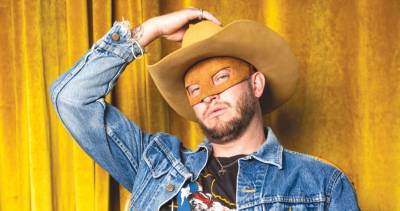Tim Louis: Disability activism has changed worlds
One of the pioneers was Ed Roberts, who appears briefly in the documentary Crip Camp
On Friday (April 22), I will be hosting a virtual presentation of the documentary Crip Camp. You can register to attend here. The doors will open at 6:30 p.m. and the presentation will start at 7 p.m.
Crip Camp describes the experience in the 1970s of a group of teenage campers who happened to have disabilities, and how they became so politicized that they went on to become powerful disability activists as adults.
Featured briefly in the documentary is disability icon Ed Roberts. The victories he and others achieved in the United States made possible what were thought to be at the time revolutionary changes here in Canada—changes such as HandyDART, curb cuts, wheelchair accessible public transit, and health authorities providing funding directly to people who needed to hire individuals to do their personal care in their homes.
In the summer of 1974, I had the incredible experience of staying in the home of Ed Roberts in Berkley California. Ed was a disability activist who was already profoundly and permanently reshaping society’s physical structures and attitudes to make them more accessible for folks with disabilities.
Ed came down with polio as a teenager. He lost pretty much all muscle function in his entire body. He could no longer do any of his personal care. Even breathing became so difficult that he was forced to live in an iron lung 12 hours a day.
After nine months in hospital, and another nine in a polio centre, he was released to home with his iron lung and some support from personal attendants. His doctors told his parents that he would now be a vegetable for the rest of his life. In later life, he would humourously describe himself as an artichoke—tough on the outside and soft on the inside!
Receiving solid support from his family, Ed ultimately completed high school and then took on the challenge of attending university in Berkeley. And a challenge it was.
To begin with, the university dorm rooms could not accommodate an 800-lb iron lung, leading to Ed taking a room in an empty wing of the campus Cowell Hospital, insisting that it be treated as a dormitory space. Ed eventually became an accessibility consultant for the university, advising on proposed renovations and helping to make accessibility a priority for the school.
A bigger fight was persuading the California Department of Rehabilitation to provide full funding for him at Berkeley, which they initially refused, declaring him “infeasible” for employment. He and supporters received the funding only after going to the media.
It would take further fights to get similar funding and personal supports for other students with disabilities at Berkeley, and to stop professionals from trying to micromanage their lives.
Ed’s admission to Berkeley opened the door for other students with severe disabilities, many of whom also moved into Cowell Dormitory. The group developed a sense of identity and a political analysis of disability, promoting independent living. They called themselves the “Rolling Quads”.
Inspired by the freedom and independence offered by electric wheelchairs, the group set about to break the monopoly of wheelchair company Everest & Jennings, designing and building their own electric wheelchairs. They were self-operated, travelled at the unheard-of speed of 20 kilometres per hour, were equipped with headlights, rear lights, and a horn, and did something other wheelchairs took decades to introduce—fully reclined.
Zipping around Berkeley, the Rolling Quads consistently faced the obstacle of curbs at street corners. To protest, they would go out late at night and pour cement, creating small ramps at street corners.
The municipal workers would then madly travel around the city at dawn, noting these illegal additions and jackhammering them out. This finally led to the passing of municipal bylaws that required all curbs to have the curb cuts that we take for granted today all over North America.
When I stayed with Ed at his home in August 1974, I even got to try out his personally designed electric wheelchair. It was terrifying.
A year or so later, I was watching the news one night and who should come on the TV but Ed! He has just been appointed by the California governor, Jerry Brown, to be the director of the California Department of Rehabilitation—the same organization that had deemed him unable to work several years prior.
Two years after that, he helped to organize the 28-day occupation of U.S. Department of Health, Education and Welfare office in San Francisco. The demand was that the Jimmy Carter administration enforce section 504 of the Rehabilitation Act of 1973—described as the Civil Rights Act for people with disabilities.
The occupation was a success. Acceptable regulations were put in place and further legislation was passed. As a result, profound changes took place, including forcing public transit to be wheelchair accessible if they wanted federal funding. Their achievement paved the way for the 1990 passage of the Americans with Disabilities Act.
In the late 1980s, my partner Penny and I had the marvelous experience of having Ed and his entourage stay with us in our home in Kitsilano. We enjoyed great company and great discussions. It was the opportunity and experience of a lifetime.
I look forward to sharing with you the documentary Crip Camp and following panel discussion on Friday April 22. You can learn more and register to attend here.
Daily atmospheric CO2 [Courtesy of CO2.Earth]
Latest daily total (April 15, 2022): 420.57ppm
One year ago (April 15, 2021): 418.30 pm















Comments